In the digital transformation world, an innovation is a constant search of businesses on how to make better decisions, generate efficiencies, and provide personalized services to their customers. Big data is the centre of these changes. Technology companies specifically depend on large volumes of data to make deductions that can be used in product development, marketing strategies, customer service among many other uses. Nonetheless, with increasing volume, variety and velocity of data, data analysis and derived actionable information, more so, has become difficult.
And here is where Artificial Intelligence (AI) comes to play. AI is going to transform how tech companies advance big data analytics to infer a high level of insights in little time, with a high degree of accuracy, and on a scale that has not been imaginable in the technological past. This blog post is about how AI is revolutionizing big data analytics within the technology firms and how it would make the process of data processing, decision making and to predict trends easier.
Understanding Big Data and Its Importance for Tech Companies
Sinking into the ways AI is changing big data analytics, we should first of all clarify what big data is and why it is so important to business organizations working in the sphere of technologies.
What is Big Data?
Big data is the vast amounts of both structured as well as unstructured data that are being created on a scale that is never seen before. Such statistics may be given by diverse origins such as the relationships with customers, social media, IoT equipment, clicks on the websites, and others. Big data is important to tech companies because it contains relevant information that can help the company form superior business decisions, create positive experiences in their customers, and streamline operations.
Why is Big Data Important for Tech Companies?
-
Customer Insights: Tech companies collect vast amounts of data about user behavior, preferences, and interactions. By analyzing this data, they can uncover patterns that help create better products and services.
-
Product Innovation: Big data allows tech companies to identify emerging trends and gaps in the market, guiding product development and innovation.
-
Competitive Advantage: Companies that can efficiently analyze and act on big data insights can stay ahead of competitors by making informed decisions quicker.
-
Operational Efficiency: By analyzing operational data, businesses can streamline processes, optimize supply chains, and reduce costs.
As the amount of data raised, conventional data analytics approaches are not adequate anymore. This is where AI gets in the game.
How AI is Enhancing Big Data Analytics for Tech Companies
The recent revolution in big data analytics is through Artificial Intelligence specifically in machine learning (ML), predictive analytics, and natural language processing (NLP) to enhance data analysis especially to extract meaningful information and help companies make better decisions and become more profitable. So how is AI being applied to big data analytics:
Real-Time Data Processing
AI is especially suitable when real-time data should be processed, which is why tech companies can hardly do without it when their decisions are made based on live data. The conventional way of handling data may not be in a position to match the highest rate of data production. Nonetheless, AI-based platforms can consume large quantities of data in real time meaning they give real-time insights which make decisions faster.
-
Example: In smart cities, AI-based systems can process incoming data in real-time (collected by various sources, such as traffic sensors, weather station, and urban services) to streamline the movement of traffic and rationalize distribution of resources.
Predictive Analytics and Forecasting
Artificial intelligence allows tech companies to predict trends, behavior, and future outcome with predictive analytics, which is based on past data. Machine learning algorithms recognizes a pattern in the information and base the predictions of future based on the identified pattern.
-
Example: In the e-commerce industry, AI can predict customer purchasing behavior based on historical data, helping businesses personalize recommendations and optimize their inventory levels.
AI-powered predictive models provide significant advantages:
-
Better decision-making: Companies can anticipate challenges and opportunities, allowing them to make proactive adjustments.
-
Personalized experiences: Predictive models help deliver more tailored experiences to customers by anticipating their needs.
Automated Data Cleaning and Preparation
Data cleaning and preparation of big volumes of data to be analyzed is one of the most time-consuming steps of analysis. The AI tools have the capacity to streamline the data preprocessing stage, errors, remove duplicates, and do some missing values. This guarantees the accuracy of data, as it is ready to be analyzed, and huge amounts of work and time are saved.
-
Example: AI tools like Trifacta use machine learning to automate data wrangling tasks, making the process of preparing data for analysis much faster and more efficient.
Natural Language Processing (NLP) for Unstructured Data
A significant part of big data is unstructured i.e., customer reviews, emails, social media posts, and text documents. NLP gives businesses a chance to gather valuable insights into this otherwise unstructured data using AI. NLP can teach AI to read, interpret and comprehend human language words which provide context to text information.
-
Example: In customer service, NLP tools can analyze customer feedback or chat logs to identify sentiments and categorize inquiries, allowing tech companies to better understand customer opinions and improve their services.
AI for Data Visualization and Insights
Data visualization that can be developed with the help of AI is the benefit of automatically creating easy-to-use and interactive charts, graphs, and dashboards. Such AI-powered visualization tools do not only display information in an easy-to-read form but also help to draw conclusions by showing the main patterns, extremes, and dependencies.
-
Example: Tableau and Power BI are two popular data visualization tools that integrate AI to provide automated visualizations and insights based on the data being analyzed.
How AI is Helping Tech Companies Make Smarter Decisions
It is not just that AI and big data can help tech companies to analyze their data efficiently but also the data-driven decisions they make can be more intelligent.
AI for Personalized Recommendations
AI algorithms help to make personal recommendations based on the previous interaction and preferences of the user. This functionality will be especially handy to the tech companies in such industries as e-commerce, media streaming, and software-as-a-service (SaaS).
-
Example: Netflix uses AI to analyze viewing habits and suggest movies and shows to users based on their preferences, ensuring a personalized experience for each user.
Enhancing Customer Support and Service
Chatbots and virtual assistants enabled by AI are able to interpret the data about customers in almost real-time to come up with real-time answers to questions. Through the pattern of analysis of previous interaction, the systems can provide individual and situationally pertinent solutions to consumers.
-
Example: Zendesk uses AI-powered tools to analyze customer service tickets and route them to the appropriate agent, ensuring quick and effective resolutions.
Optimizing Marketing Campaigns
Tech companies can rely on the assistance of AI in enhancing their marketing strategies through analysis of massive amounts of customer data. Artificial intelligence also enables businesses to harness their campaigns, by predicting the trends and finding out which of the employed marketing strategies work the best.
-
Example: Google Analytics and HubSpot use AI to analyze user behavior on websites and suggest optimizations to marketing campaigns, such as content changes or targeting adjustments.
Key AI Tools and Platforms for Big Data Analytics
The number of AI tools and platforms dedicated to big data analytics is large. The tools listed below are some of the most popular ones that are currently helping tech companies to incorporate AI into their data analytics efforts:
| Tool/Platform | Key Features | Best For |
|---|---|---|
| Google BigQuery | Scalable cloud data warehouse, AI integration, real-time analytics | Real-time big data analysis and reporting |
| IBM Watson Analytics | AI-powered analytics with natural language processing (NLP) | Predictive analytics and business insights |
| Tableau | AI-powered data visualization, real-time analytics | Visualizing large datasets and identifying insights |
| DataRobot | Automated machine learning platform for predictive analytics | Automating the process of building predictive models |
| AWS SageMaker | Managed platform for building, training, and deploying ML models | Scaling AI and ML models in the cloud |
Challenges of AI in Big Data Analytics
Data Privacy and Security
The AI technologies may also need to access extensive portions of sensitive information, which is an issue of data privacy and security. Tech businesses should adhere to such regulations as GDPR and implement strategies to protect the information of users.
Solution: Use AI tools that are compliant with privacy regulations and invest in robust encryption and data protection measures.
High Complexity and Cost
The process of implementing AI solutions is tricky and costly, particularly by small players in the technological industry. Training and integrating AI models with the existing systems take a great number of resources and skills.
Solution: Start small by adopting AI tools that integrate with existing systems and have a proven track record. Leverage cloud-based AI platforms that offer scalable solutions at lower upfront costs.
Skill Gap
AI and big data analytics is a skill that needs an expert in data science and machine learning that is not easily accessible in every organization.
Solution: Invest in training your existing staff, or partner with external vendors or consultants to bridge the skills gap.
Overcoming Challenges in Implementing AI for Big Data Analytics
Although AI can be quite beneficial in big data analysis, its application is not entirely free of difficulties. So, how about we take a peek at the most apparent challenges that technology companies face in order to incorporate AI in their big data plans and the ways it could be done.
Data Privacy and Security
Challenge: There is a concern about privacy and security of sensitive and personal data and AI systems usually need access to a substantial amount of information. Business should make sure they are not violating the data protection laws like the GDPR, CCPA, and so forth.
Solution:
-
Implement Robust Security Measures: Use encryption, anonymization, and secure cloud storage solutions to protect sensitive data.
-
Regulatory Compliance: Ensure that the AI tools you choose adhere to local and global data protection regulations. Look for AI platforms that offer compliance features, such as built-in data security controls and audit logs.
-
Data Governance Framework: Establish a comprehensive data governance policy that dictates how data is collected, stored, processed, and shared.
High Complexity and Cost
Challenge: AI solutions may cost a lot and be complicated to deploy, especially by smaller technological firms. Infrastructure, knowledge, and experience necessary to develop models and maintain them may be a setback
Solution:
-
Start Small: Start with cloud-based AI solutions like Google BigQuery or AWS SageMaker, which offer scalable, pay-as-you-go models.
-
Use Pre-built AI Models: Many platforms offer pre-trained machine learning models that can be easily customized to your specific needs, reducing the time and cost involved in model training.
-
Leverage AI-as-a-Service: Platforms like IBM Watson and Microsoft Azure AI offer AI capabilities as services, allowing companies to integrate AI into their workflows without a large upfront investment in infrastructure.
Data Quality and Integration Issues
Challenge: The success of AI can be as efficient as data it processes. The problem that many tech companies face is a large degree of data fragmentation, low quality of the data and integration problems.
Solution:
-
Data Cleansing: Use AI-powered data preparation tools like Trifacta to clean and preprocess your data before feeding it into AI models.
-
Data Integration: Implement data lakes or warehouses (e.g., AWS Redshift, Azure Synapse) to consolidate data from various sources. Integrating multiple data sources into a centralized repository ensures that AI algorithms have access to accurate and comprehensive data.
-
Continuous Monitoring: Regularly monitor and evaluate the data quality to ensure that the AI models are receiving the best possible input.
Best Practices for Integrating AI Tools into Big Data Analytics Workflows
To be able to successfully integrate AI tools in big data analytics workflow, one should not only install software but also coordinate its processes, people, and technology. The following are good habits that should be put in place to have smooth integration:
Understand the Use Cases
To ensure that you get the best out of AI (as part of your big data strategy), you have to first clearly define the business areas that AI will be most useful. Example common uses:
-
Customer Insights: AI-driven analytics help uncover patterns in customer behavior, preferences, and purchasing habits.
-
Fraud Detection: Use AI to monitor transactions in real time and identify potential fraudulent activities.
-
Supply Chain Optimization: AI models can predict demand and optimize inventory levels based on real-time data.
Build a Strong Data Infrastructure
Effective AI-driven analytics can be based on a solid data infrastructure. Apply investment in data storage that is scalable, cloud, and databases capable of processing large data and real-time analytics.
Example: Cloud-based platforms like Google Cloud BigQuery, Amazon S3, and Microsoft Azure offer scalable storage and computing power to support big data workloads, enabling AI models to process and analyze data in real-time.
Ensure Cross-Department Collaboration
The adoption of AI in big data analytics cuts across several departments, including IT and data science, through to marketing and operations. Make sure that there are all necessary stakeholders, who will be engaged in the planning and implementation of AI integration. This will assist in achieving convergence in goals, offer a better communication system and deployment success.
Invest in Training and Skill Development
Artificial intelligence tools demand experienced workers to handle them properly. Make your team highly competent in data science, machine learning and AI. Think about hiring in special talents or training your current workforce.
Example: Offer training on platforms like Coursera and Udemy, where employees can learn about machine learning algorithms, data visualization, and AI-powered analytics tools.
Leveraging AI for Improved Business Decision-Making
Automation is not the only benefit that AI brings to the table: it can offer profound knowledge, which could be used to make more intelligent decisions. This is how AI can improve decision-making of tech companies:
Real-Time Decision-Making
AI tools have made it possible to analyze data in real-time, and this is making the companies take smarter decisions, quicker. An example of applying AI can be seen where it is used to evaluate the data presented by IoT devices, social media, or customers and give on-demand information on how a company should react to it.
Example: In retail, AI-powered predictive models help businesses forecast customer demand in real-time, enabling them to adjust inventory levels or marketing strategies on the fly.
Advanced Data Analytics for Informed Strategy
The tech companies can use AI tools and apply the advanced analytics to find trends, anomalies and correlations in large data. This will enable a better strategy formulation especially in sectors such as product development, marketing and customer experience.
Example: AI-powered platforms like Tableau and Power BI offer data-driven insights into business operations, helping companies identify key metrics that drive performance.
AI for Predictive and Prescriptive Analytics
Although predictive analytics can be used to determine future outcomes, prescriptive analytics, which is driven by AI, presents recommendations that can be used. With the help of historical data, real-time and forecasting, AI algorithms can propose the most favorable course of action.
Example: In finance, AI systems can recommend investment strategies based on predicted market movements, helping companies make better financial decisions.
Summary
The impact of AI on the big data analytics of tech companies is a matter of fact.
AI is opening this value in real-time data processing and predictive insights, automatized decision-making, and more considerable customer experiences.
Although some issues, such as the imperfection of data confidentiality and the high cost of implementation still exist, the advantages strongly surpass the risks.
With the integration of AI-powered tools and an approach to best integration practices, tech companies can obtain a competitive advantage, make better decisions, and become innovative.

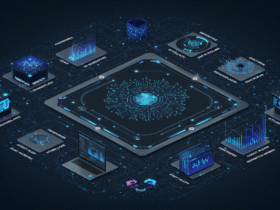

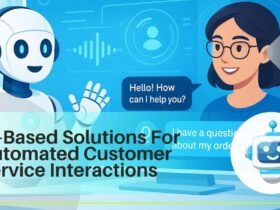









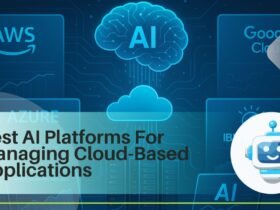

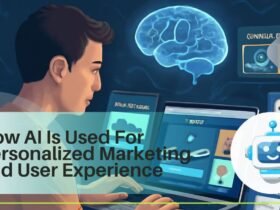
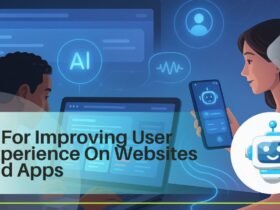
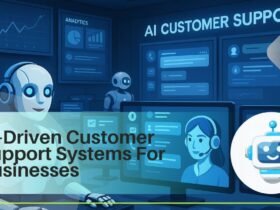

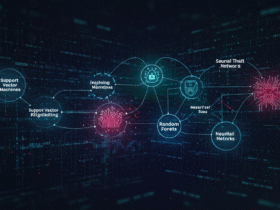




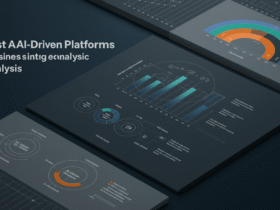




Leave a Reply